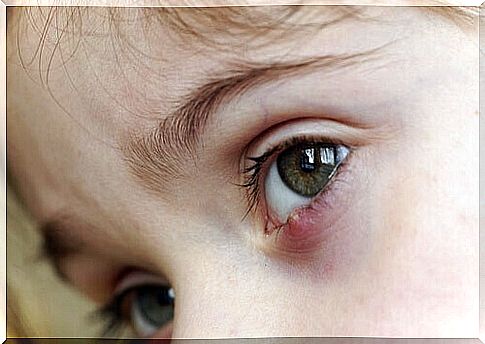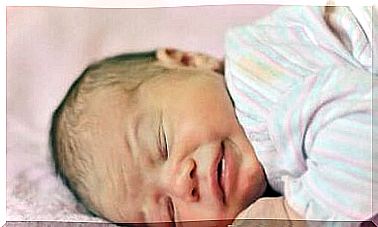Styes In Children: What To Do And How To Cure Them? – Being Parents

They are nothing more than inflammation of the skin, but styes have surely caused more than one headache. And this, both to the children who suffer from it and to their mothers.
No matter how many times you tell them to “don’t itch” they do it anyway, making it worse. Either way, anyone who has had a stye understands them perfectly.
What exactly is a stye? It is a small inflammation filled with pus that appears on the surface on the roots of the hairs of the eyelashes. It is in the sebaceous glands (which produce fat) or sweat glands (which produce sweat) that inflammation occurs.
These glands are responsible for producing a liquid substance that lubricates the eyes.
A stye can appear on the upper part of the eyelid or on the lower eyelid. It is not to be confused with hailstone, which also appears here, but is not as painful and is larger. The inflamed gland in this case is the Meibomian gland.
Styes can be external or internal. The latter, as the name suggests, occur under the skin and are not visible, but they are just as painful. They take longer to heal because the stye has less drainage capacity.
Symptoms of a stye are: redness and swelling of the eyelid, itching, pain to touch, tears in the eyes and, finally, the appearance of a boil filled with pus.
Causes of styes in children
The cause of this disorder is a bacterial infection commonly caused by streptococcal and staphylococcal bacteria. The origin of its appearance is not a deficiency in the child’s organism.
These are bacteria that live in our body and which occasionally can cause sebum blockage which turns into a stye, either with old sebum, dead skin cells or old bacteria in the skin.

How are styes treated in children?
Beyond the fact that the vast majority of styes go away spontaneously, here are some recommendations to speed up the healing process:
- Apply warm, wet compresses to the inflamed area. Do this for 10 or 15 minutes, 3 or 4 times a day.
- In addition to the previous option, you can add chamomile tea to calm the pain and help reduce inflammation.
- If you go to the pediatrician, he may prescribe ointment or eye drops to apply to the child.
- If the child wears contact lenses, they should be replaced with regular glasses until the infection is gone. When you start using the lenses again, clean them with a suitable solution and cotton wool.
Normally, a stye takes 3 to 7 days to disappear. If it does not go away, see a doctor, as it may have become encysted. In this case, a small incision should be made to drain it. It is a painless solution, which is performed under local anesthesia and does not require suturing.
What NOT to do to try to cure a stye
We now know what to do. However, perhaps it is more important to know what absolutely not to do when trying to cure styes in children. Here are the three prohibitions to take into account:
- Do not squeeze them. If you try to burst it, you can cause a more serious infection.
- Do not rub. Make sure your child does not scratch the inflamed area. This will only make the infection worse.
- Do not apply creams or products to it without medical recommendation. Its proximity to the eye makes it a sensitive area and the use of uncontrolled products can cause significant damage.

How to prevent styes in children?
The most effective way to do this is to maintain good daily hygiene. The child should wash his hands well and, if he has had styes in the past, it is advisable to occasionally wash off the fat that accumulates in the eyelid area.
Likewise, it is vitally important to disinfect the hands before handling contact lenses, due to direct contact with the eyes during their placement.
For adults, it is also advisable to remove make-up before going to sleep, as well as to periodically check the good condition of mascara, eyeliner and eye shadows. And this, especially if they have not been used for a long time.
Also, it should be taken into account that those with a stye should not share personal items with other people, such as towels, pillows or sunglasses, among other examples.









